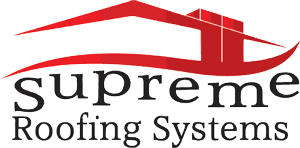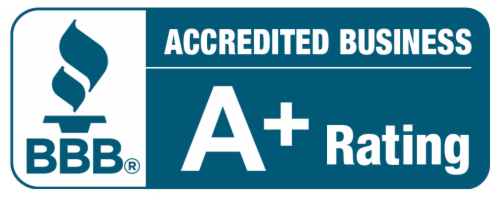How Roof Leaks Disrupt Business Operations
How Even Small Leaks Damage Equipment, Inventory, And Tenant Reputation
A roof leak might seem like a minor annoyance at first. Maybe it’s just a little water pooling in a ceiling tile or a small drip tucked away in a corner of a warehouse. But those tiny inconveniences tend to snowball into much larger problems—ones that don’t just damage your building, but cut straight into the core of your business operations. Whether you’re running a bustling distribution center, a quiet office building, or a multi-tenant retail complex, roof leaks don’t just get in your way—they mess with everything from productivity to profit margins.
Equipment And Inventory Don't Mix With Moisture
In any commercial building, the roof is the first line of defense between your valuable assets and the elements. When that shield fails—even slightly—the damage can spiral fast. Most business environments rely heavily on equipment that doesn't play well with moisture. A leaking ceiling over a server rack, a switchboard, or even basic office electronics can mean costly downtime and repairs.
Water infiltration doesn’t necessarily need to gush in to cause trouble. Even subtle seepage over time can corrode metal casings, short-circuit wires, and create electrical hazards that not only require expensive fixes but might force shutdowns until everything’s cleared and confirmed to be functioning again. And that’s assuming the problem is caught early. More often than not, leaks go unnoticed until they've quietly created serious complications behind the scenes.
Inventory takes just as much of a hit. From stored pallets in warehouses to retail merchandise on shelves, very little is immune to the effects of water damage. Cardboard boxes soak through, packaging warps, and entire batches of product may be considered unsellable due to even minor cosmetic issues. In some industries—especially food and pharmaceuticals—leaks can compromise compliance and create unsalvageable stock at the first sign of contamination. That’s not just a hit to inventory levels, but to the company’s bottom line.
Productivity Slows When Operations Are Interrupted
Leaking roofs don't just hurt your physical assets—they interrupt the day-to-day rhythm of your workforce. When water starts dripping through the ceiling, people need to be redirected to address the issue or avoid certain areas. Maintenance staff are pulled away from scheduled tasks to handle emergency containment. Plastic sheets, buckets, and caution tape begin to appear—quick fixes that send a clear message: something’s wrong.
Now multiply that across an entire office floor or production area. When people are shifting desks, moving workstations, or side-stepping puddles, productivity naturally dips. Conversations are interrupted, focus is lost, and stress levels climb. In more physical work environments, like manufacturing or packaging, puddles on the floor turn into trip hazards and can stall operations completely until the area is made dry and secure.
On top of that, depending on the size and scope of the leak, you might have to shut down an entire section of the building or even temporarily relocate staff. That kind of disruption doesn’t just take time—it costs real money in lost output. And in industries with tight turnaround times or contractual deadlines, even a brief delay can strain relationships with clients and vendors.
Leaks Undermine A Tenant’s Credibility
For buildings that house tenant businesses—like retail centers, professional complexes, or shared industrial facilities—a leaking roof can cast a long shadow over the tenant’s image. Whether you're the property owner or the tenant, the ripple effect is the same: leaks impact how customers and clients perceive the professionalism and reliability of the operation.
Imagine a customer walking into a showroom and seeing stained ceiling tiles or damp flooring cordoned off with cones. It doesn't just give the space a neglected feel—it can raise concerns about hygiene, quality control, or the business’s attention to detail. Even if the products or services offered have nothing to do with the building itself, a leak creates a negative impression that lingers.
For medical offices, spas, or high-end retailers, this is particularly damaging. Ambiance and environment matter. No one wants to sit in a waiting room with visible water damage or shop in a boutique where they have to dodge a drip. And for tenants dealing with high foot traffic, every minute of inconvenience can affect repeat business and word-of-mouth reputation.
Furthermore, leaks that recur or go unresolved over time can sour the tenant-landlord relationship. Tenants may begin looking for more stable properties or demand rent concessions. For landlords, that can mean higher turnover, lost rental income, and the cost of repairs—plus the risk of legal exposure if the situation leads to damage claims or safety violations.
Water Damage Rarely Stays In One Place
What makes roof leaks so uniquely problematic is their unpredictability. Water has a tendency to travel along beams, ductwork, or insulation, showing up in places far from the original breach. This can make diagnosis difficult and repair timelines longer than expected. While one ceiling tile might be visibly soaked, the underlying issue could be spanning multiple feet—or even multiple rooms—out of sight.
Once water infiltrates a structure, it doesn’t just affect what's immediately beneath the roof. It can seep into drywall, swell flooring, warp cabinetry, and even infiltrate HVAC systems. The presence of moisture also encourages mold growth, which adds another layer of remediation expense, not to mention air quality concerns. Mold is a quiet destroyer—it often builds up in spaces no one sees until the odor creeps in or respiratory symptoms start surfacing among occupants.
Left unchecked, even the smallest leak can evolve into a systemic problem requiring invasive repairs. Walls need to be opened up. Insulation may need to be replaced. Sometimes, flooring has to come out. And those repairs almost always come with an extra hit: operational downtime. It’s rarely a quick fix, and trying to cut corners usually results in recurring issues.
Don’t Let Leaks Control Your Business
When leaks go unaddressed, they don’t just damage buildings—they disrupt everything your business depends on to operate smoothly. From equipment and inventory to workflow and public image, the effects creep into every corner of a commercial space. What starts as a minor ceiling stain can quickly escalate into full-blown operational chaos.
At Supreme Roofing, we understand how crucial a dependable roof is to keeping your business on track. That’s why we approach every inspection and repair with the attention and urgency commercial properties demand. If your building is showing signs of water intrusion—or if you're concerned about aging roof systems—it’s worth having professionals take a closer look before small problems turn into major ones.
Contact us today to schedule a consultation. Let’s put an end to disruptions and keep your business running the way it should.

